Italy is the country of ancient villages, the true wealth of our country.
Life in the villages speaks of an Italian lifestyle, made up of tranquility, authenticity and hospitality.
After the first half of the twentieth century in Italy there was a depopulation of small towns, with a migration of inhabitants towards large cities in search of greater opportunities for work and leisure.
The counter-trend of this last period instead sees the repopulation of many villages, especially by young people who want to reappropriate the territory, traditions and bring the life of the village back to the centre of attention, opening bars and rediscovering the strong touristic vocation of these magical places.
The two regions of central Italy, Marche and Umbria, are full of small villages scattered in the green hills... let's discover some of them together!
Historic villages in Le Marche
The territory of Le Marche region extends from the Adriatic Sea to the Apennines, offering breathtaking landscapes from the sea through the hills to the mountains, in a short time.
Thanks to the variety of the landscape, we can visit small villages overlooking the sea, villages immersed in the countryside and even villages on top of the mountains, all in a single region!
Let's discover some of these beautiful villages of Le Marche together.
Gradara, the Castle of Paolo and Francesca
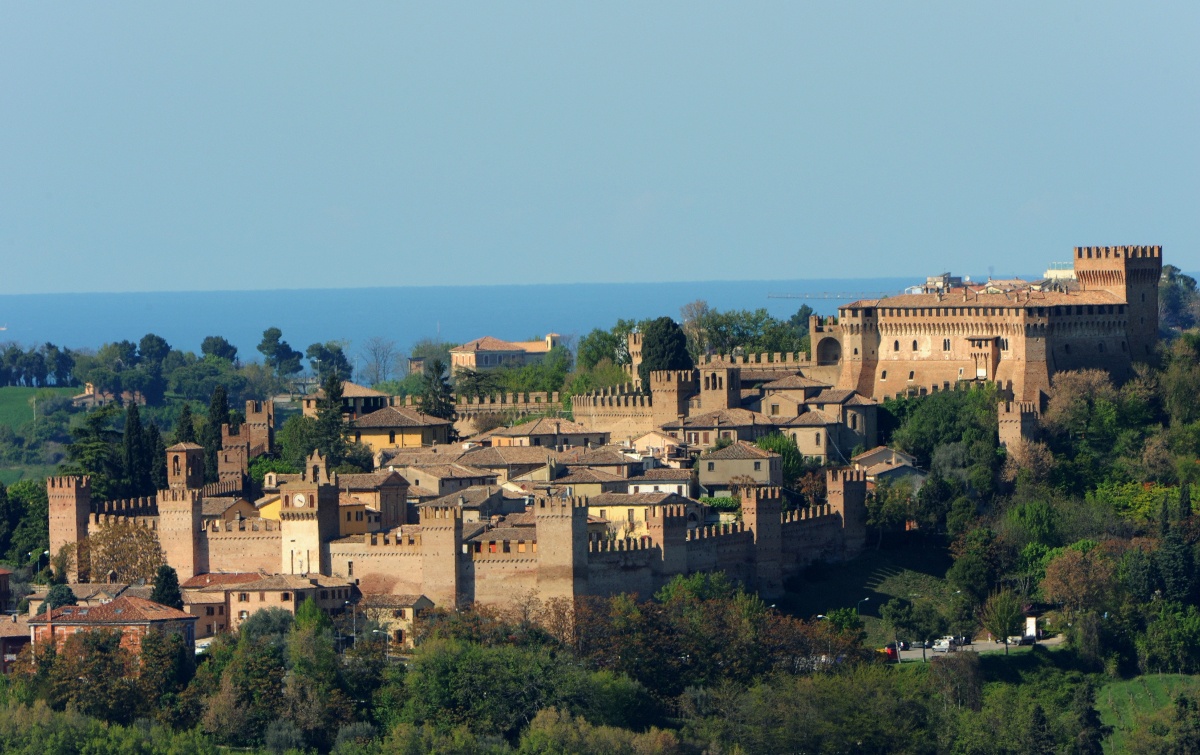
Located at the top of a hill, the village of Gradara is located in the north of Le Marche, in the province of Pesaro Urbino. The entire village is very well cared for, with balconies adorned with flowers and quiet and picturesque streets, but it is the beautiful mediaeval castle that dominates.
Within the walls of this stronghold, one of the most frequently told love stories of all time took place, that between Paolo and Francesca, narrated by Dante in the 5th Canto of the Inferno.
There are numerous events that take place in Gradara during the year: Gradara d'amare in February, Thursday at the castle from June to September, the Siege at the Castle in July, The Magic Castle Gradara in August, and Christmas Castle in December.
Corinaldo, the city of walls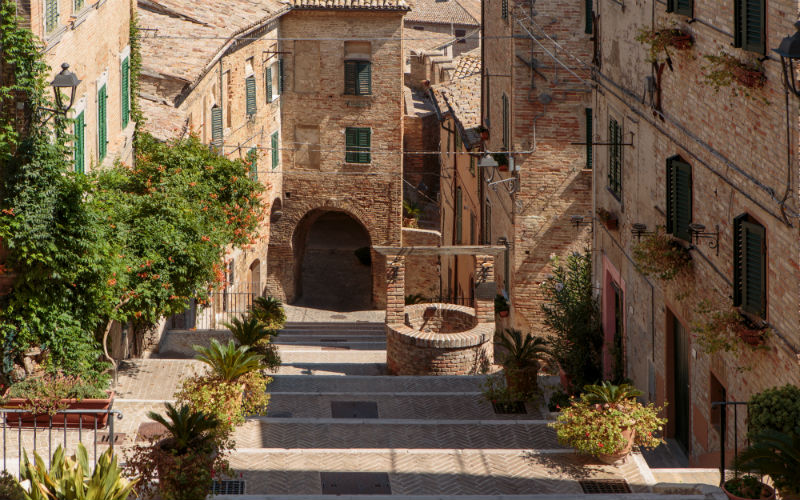
The village of Corinaldo is located in Le Marche hinterland, but just a few km from the beach of Velluto di Senigallia.
It is surrounded by its imposing walls that extend for about a kilometre, interspersed with towers and access doors to the village, on which you can take a wonderful panoramic walk. Symbolic of the village are the hundred stairs, an infinite staircase that cuts the historic centre of the village in two, making it unique in the whole of Le Marche.
On Halloween nights, the village hosts the Witch Festival with themed decorations, food stands and travelling shows.
The effort of climbing the 100 stairs will be rewarded by a breathtaking panorama and the magic of a quiet historic Italian village.
Mondavio and his Fortress
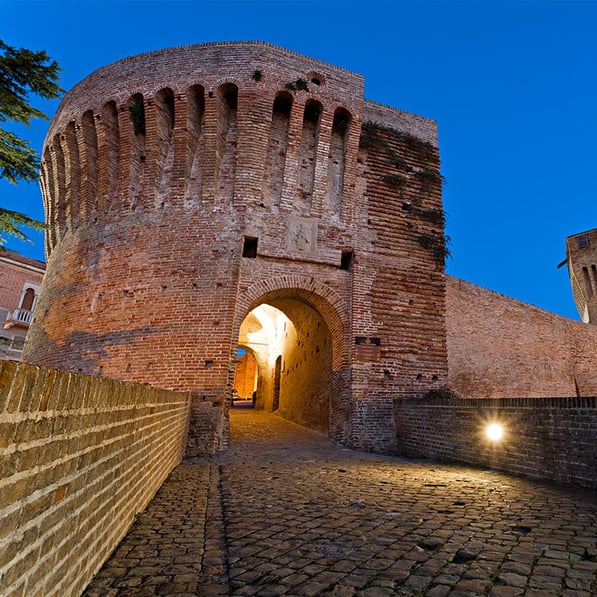
This Renaissance village is located in the north of Le Marche region , a few kilometres from the sea, in the province of Pesaro Urbino.
Enclosed by its perfectly preserved walls, it is overlooked by the imposing Rocca Roveresca, the town's main monument. Inside you can admire a museum of Historical Reenactment, in which scenes of Castilian life have been reproduced.
The historic centre is home to many small gems, including the Art Nouveau Apollo Theatre, which is well worth a visit.
One of the highlights of the summer in Mondavio is the famous Boar Hunt, which takes place in mid-August and begins with a splendid Renaissance banquet to end the day of Ferragosto with parades and games typical of the Renaissance, with a fantastic fireworks display framed by the Rocca Roveresca to close the celebrations.
The Renaissance charm of this village in Le Marche will fill unique days with glimpses and images that will remain etched in your memory.
Mondolfo, between hill and sea
The charming village of Mondolfo is located north of Le Marche in the province of Pesaro Urbino. It enjoys an excellent location, with the Adriatic Sea in front and the green hills of Le Marche behind.
The village is surrounded by a double wall, inside which we find the monumental Church of Sant'Agostino with the cloister and the Romanesque Church of San Gervasio.
Not far from the historic centre you can organise bike or horseback rides in the path called The Tuff Valley, along which you can admire the Sanctuary of the Madonna delle Grotte.
Recently, the inhabitants of the village have brought the Mondolfo open-roofed gallery project to life, thanks to which you can admire murals, giant art photos and works of street art on the ancient village's streets, making it a contemporary open-air museum.
Torre di Palme, the balcony of Le Marche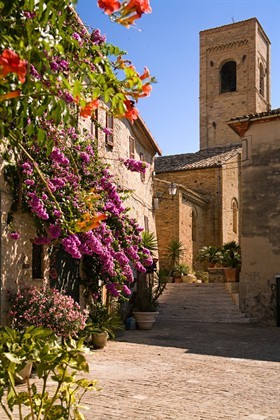 This small village in the south of Le Marche is part of the municipality of Fermo.
This small village in the south of Le Marche is part of the municipality of Fermo.
Meticulously cared for by its loving inhabitants, this village is an interweaving of alleys with evocative views that branch off from the main street, which leads us from the entrance of the village to the piazzale Belvedere, where there is the Church of Santa Maria a Mare, host to many weddings and ceremonies.
In summer, this village is enriched with life and events, such as the traditional Market of Local Crafts that takes place every Tuesday in July and August and there are outdoor theatre events and music evenings.
The Boschetto del Cugnolo surrounds this village and offers the opportunity to take a pleasant walk on an easy route, organised with various rest areas and breathtaking views, which ends with the Grotta degli Amanti, an evocative place that acts like a theatre of the tragic love story of two of the village's inhabitants.
A walk in Torre di Palme will take you to the sea view accompanied by a light breeze and the gorgeous colours of the blossoming bougainvilleas.
Grottammare and the Riviera delle Palme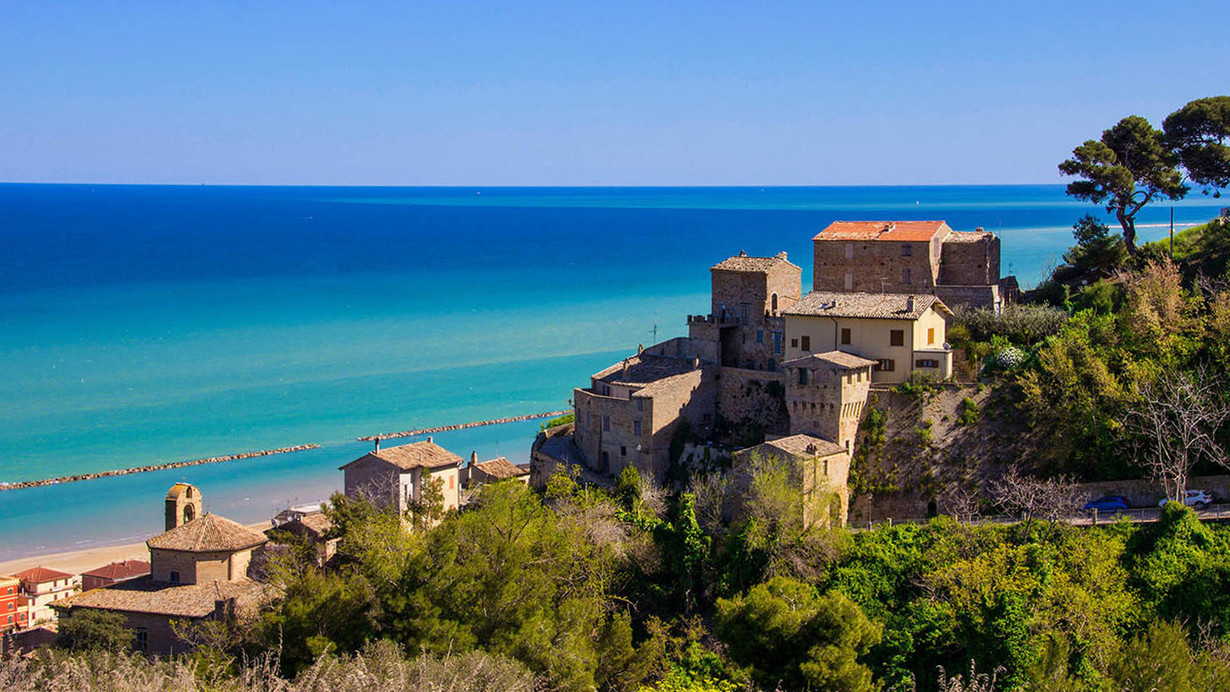
The village of Grottammare is located in the south of Le Marche, in the province of Ascoli Piceno.
The peculiarity of this village is that it is divided into two areas, one that runs along the Adriatic Sea and a more inland area, called Grottammare Alta.
The coastal area is part of the famous Riviera delle Palme that leads to San Benedetto del Tronto, reachable by bicycle thanks to a wide cycle path that runs along the entire village, flanked by long beaches of fine sand and beautiful art nouveau villas.
Summer in Grottammare is full of events, including two special festivals: Cabaret Amore Mio, the festival of humour, and Anime Buskers, the weekend dedicated to street artists.
Between sea and mountains, Grottammare offers many leisure possibilities for every type of tourist.
San Ginesio, the balcony over the Sibillini Mountains
Moving towards Le Marche hinterland, in the province of Macerata there's San Ginesio, an ancient mediaeval village that rises 690 meters above sea level and is known as the balcony of the Sibillini Mountains.
A mighty wall surrounds the historic centre of the village, where the Giacomo Leopardi Theatre is located. This theatre is very important for the life of the village, which has always been alive and has been the venue for concerts and performances.
Among the main events, the Ring Joust that takes place every year at night on August 13 and the International Festival of Folklore, with performances of folk groups from around the world in the last weekend of July.
Admiring from here the breathtaking view that goes from the Adriatic Sea to the Sibillini Mountains is truly an unmissable experience.
Historic villages in Umbria
Umbria region is located in the centre of the Italian peninsula and is often called the green lung of Italy, as it is characterised by green forests and endless fields of olive trees.
It is the only region of the Centre that has no access to the sea, however it can be reached in less than an hour thanks to a new road link that leads to the Marche coast of the Adriatic Sea.
The Umbrian villages are rich in history, art, spirituality and traditions, carried on by a population that is very proud of its region.
Let's see how many of these you already knew!
Gubbio, the cable car and the largest Christmas tree in the world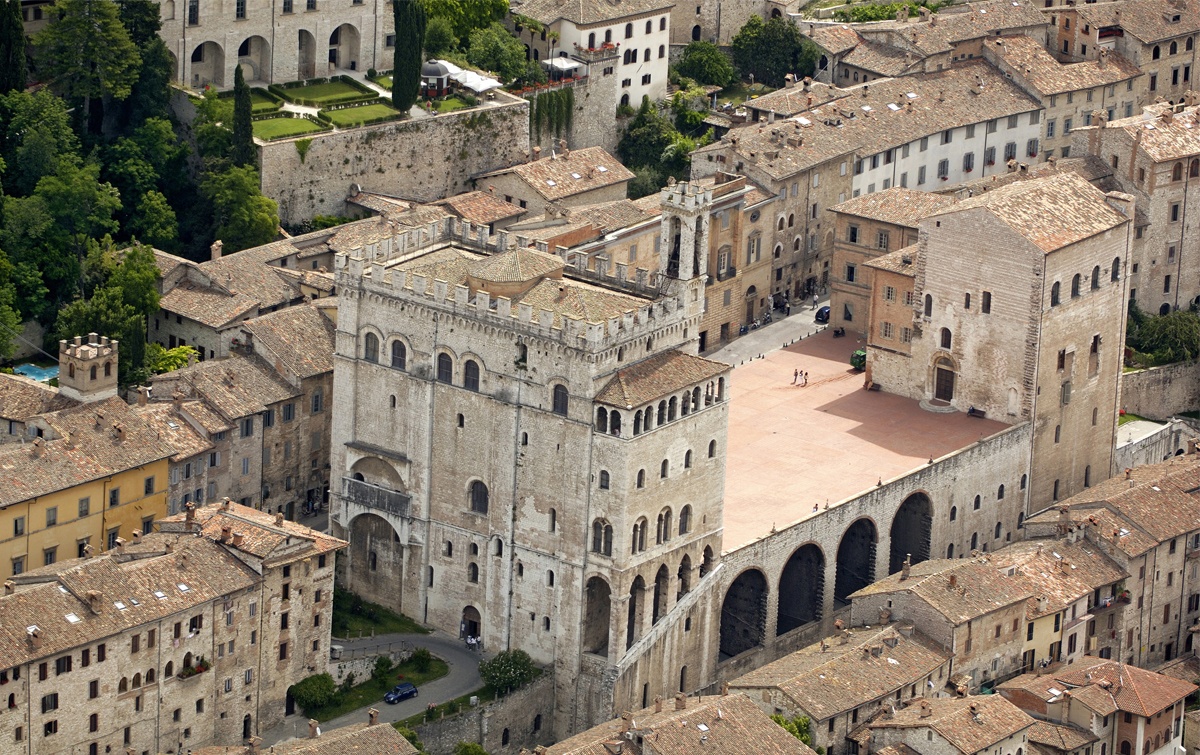
Gubbio is a mediaeval town in the Province of Perugia. It is called the grey city, because of the colour of the limestone blocks with which its historic buildings are built.
The heart of this village is certainly the Piazza Grande, an extraordinary hanging square from which you can admire the valley below.
Gubbio gives us a unique experience in its genre, in fact from the city centre it is possible to take a cable car that takes us to Monte Ingino, where the Basilica of Sant'Ubaldo is located. Rising up towards the mountain suspended in the air, you can admire the entire village and the surrounding countryside.
There are numerous historic buildings of both artistic and monumental importance, such as the Churches of San Francesco, the Cathedral, the Palazzo del Bargello, the Fountain of Fools, and the Palazzo Ducale.
There are two main events that capture the attention of tourists: the largest Christmas tree in the world, built along Mount Ingino with about 500 coloured lights, and the race of the Candles that takes place on May 15.
The magic of this Umbrian village is palpable with every step you take.
Spello and Infiorate
The village of Spello is located in the province of Perugia, at the foot of Mount Subasio and overlooks the Umbrian plain. The historic centre is enclosed within walls of Roman origin still in perfect condition and access to the village takes place through the majestic gates, symbolic of the town.
Climbing towards the top of the village, we encounter several historic buildings including the Church of Sant'Andrea, the Pinacoteca Civica, the Tega Chapel and the Church of Santa Maria Maggiore.
The main event that takes place every year in Spello is the Infiorata del Corpus Domini, between May and June. All the streets of the mediaeval village are transformed into a carpet of flowers, each street of the town is decorated with paintings of sacred art composed of flower petals, skilfully collected by expert hands.
Walking through the streets during this event is a true multi-sensory experience: a riot of colours, flowers, smells and unrivalled spirituality.
Norcia, lentils and heart-shaped walls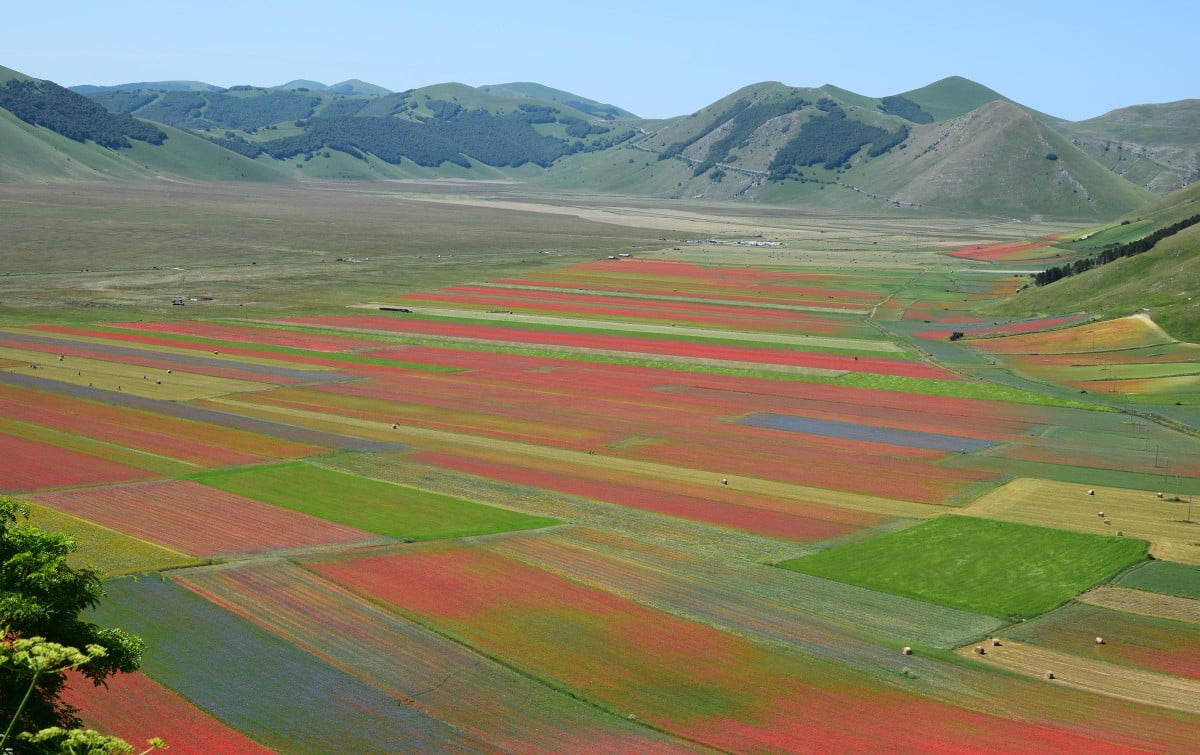
The town of Norcia is located on the Umbrian Apennines in the province of Perugia, within the territory of the Monti Sibillini National Park.
The historic centre is enclosed by walls with an evocative heart shape and unfortunately still presents the wounds of the damage caused by the tremendous earthquake of 2016. Walking within the walls is very evocative, stimulating non-stop emotion among the ruins of the churches and damaged monuments together with the palpable desire for rebirth and a new beginning.
The town is located on the Valnerina and is a crucial starting point for nature and hiking trails.
Norcia is famous for its ancient tradition linked to agricultural and dairy products, in particular the Lentil of Castelluccio di Norcia, which is grown on a beautiful plateau within the Sibillini Mountains, the destination of many tourists every year at the end of July, who go to Castelluccio to admire the spectacle of the flowering of lentils, with splashes of colour as far as the eye can see. Also famous are the norcinerie, shops where local products are sold, mainly based on pork and the famous Norcia truffle.
An ancient charm that has remained intact, despite its wounds.
Assisi, the city of St Francis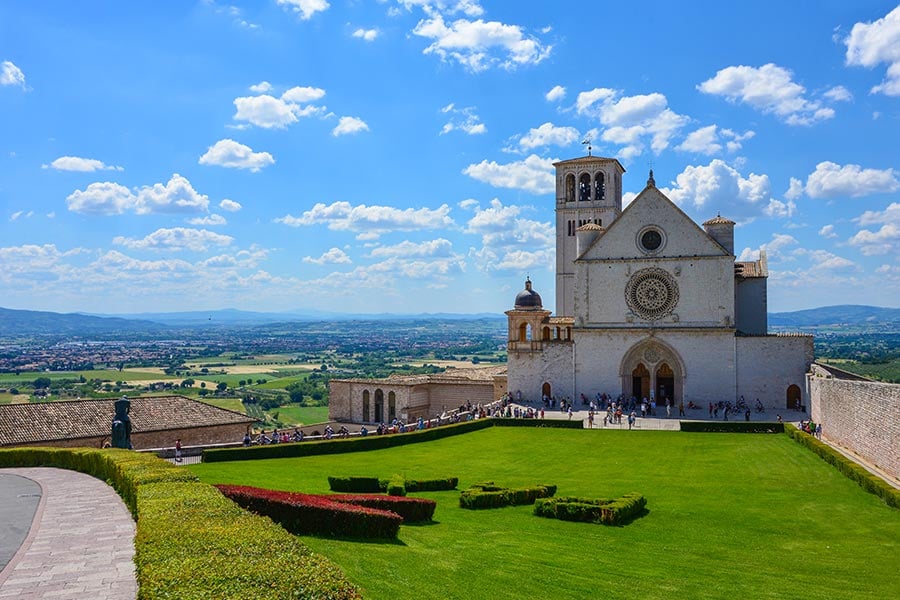
Assisi is the birthplace of St Francis and is located in the province of Perugia. A city referred to as a Sanctuary, due to the vast number of churches and basilicas in the historic centre.
The most important is the Basilica of St Francis, a unique combination of art and architecture, which leaves every visitor speechless. It looks like a single building but in reality it is formed by two overlapping churches: the lower and upper Basilica, and a crypt with the tomb of the Saint. Italian art is best expressed in this incredible place, including, among others, the work of Giotto and Cimabue.
Not far from the Basilica of Saint Francis we find the Basilica of Santa Chiara with its crypt, the Palazzo del Capitano del Popolo, the Palazzo dei Priori and the Torre del Popolo in Assisi.
A few kilometres from the historic centre is the Basilica of Santa Maria degli Angeli, which houses the Porziuncola, the small church in which Saint Francis composed the Canticle of the Creatures and died. At the top of the mountain is the Rocca Maggiore, from which you can enjoy a magnificent panoramic view of Assisi and the surrounding countryside.
The streets of this village are pervaded by spirituality and tranquility, a sense of peace that attracts thousands of tourists every year in search of a special place.
Spoleto, nature and the event Festival dei Due Mondi
Spoleto is located in the southern part of Umbria, in the province of Perugia. The municipal area is vast and passes through the historic centre, perched on the hill of Sant'Elia, to continue towards a more naturalistic area up to Monteluco.
The old town located at the top of the hill is easily accessible thanks to escalators, which will take us directly to the beating heart of this ancient village. If you get lost in the picturesque streets of Spoleto, you can see the imposing Duomo with the large square in front of it and climb up to the Rocca Albornoziana, the true symbol of the city, which is connected to Monteluco by the famous Ponte delle Torri.
Millions of tourists come every year to Spoleto to participate in the Festival of Two Worlds, which lasts about two weeks from the end of June. Ballet, contemporary music, opera, painting, lectures, and theatrical performances: every type of art is represented at the festival, which fills every corner of the city with music and beauty.
Spoleto contains the essence of Umbrian culture, between art and tradition.
Bettona, the Etruscan balcony
This village is perched on a hill surrounded by olive trees, and enjoys a breathtaking view that goes from Perugia to Assisi up to Spello.
Surrounded by ancient walls, you enter the historic centre through the wooden gate of Santa Caterina, which leads you inside the village with its marked mediaeval style.
Among the main monuments are the Collegiate Church of Santa Maria Maggiore, the Church of San Crispolto, the Oratory of Sant'Andrea and the Pinacoteca.
Artistic and gastronomic events are at the centre of the village's life, especially in the summer when the Bettona Festival is held under the Stars between June and July, with concerts, classical music, dance and theatre, and finally the Goose Festival in the last week of July, with the tasting of typical products.
Todi, the city of the Archers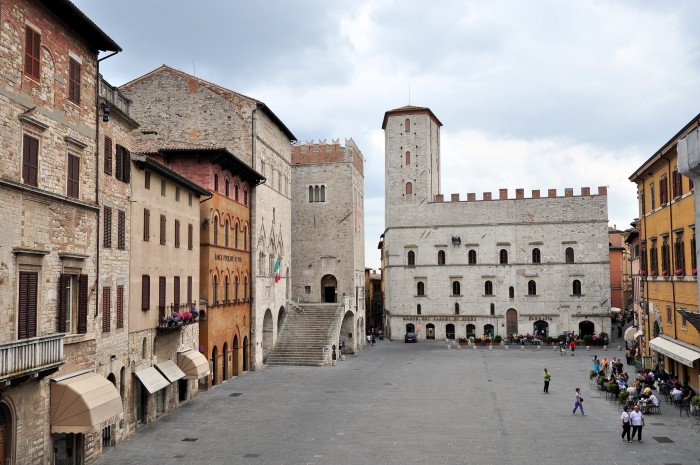
Todi is a hilly town enclosed by three circles of walls in the province of Perugia, which overlooks the beautiful Tiber valley.
Rich in monuments and historical buildings, among which we mention the Town Hall and the Cathedral, it contains a hidden treasure underground, the Roman Cisterns, an evocative place formerly used to collect rainwater, still open to visitors.
It is called the city of the Archers, because every year at the end of April in Piazza del Popolo a historical re-enactment takes place that involves numerous teams of archers, who fill the historic village with races and mediaeval charm.
Birthplace of the humanist poet Jacopone da Todi, the interior of the village is steeped in history and art, best representing the essence of Umbrian tradition.
Are you ready to go?





